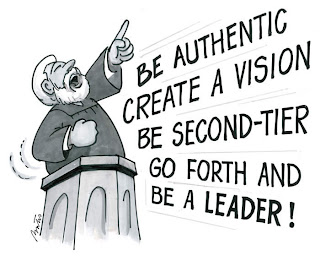
This week I attended a disappointing but eye opening Alumni event on personal branding.
Disappointing because the panel delivered little of value on personal branding.
Eye opening because those attending spanned the full age, experience range - from new grads looking for their first jobs, through recently sidelined senior execs looking for new careers.
Not easy at 55. Or 24. Or 33. The angst in the room was palpable.
Which got me thinking.
First, it's too bad the 55 year-olds were just waking up to their personal brands now. Second, they need to change.
Also, what a great time for the 24 and 33 year olds to be grabbing their personal brands squarely by the 5 P's, and maximizing their efforts to stand out now. Forever.
I felt worst for the 55 year olds. I would have had some simple advice for them: modernize your packaging.
Lose the blue/grey suit, white shirt and boring tie. Not only do you look like every other 55 year old in the room, you look 55. For the ladies - sorry - sleeker is better. Nothing says over the hill like overweight. And colour is good. One thing about boring...it's boring.
For the 24 year-olds 'promotion' and 'product' seem to be the priorities. Desperately unafraid to network in person, checking their on-line presences(?) turns up....nothing other than a maybe it's you/I'm never checking the profile on Facebook. Somewhere in there is a pretty decent opportunity to stake a point of view, show off some great potential and get noticed.
Although this never came up, I wonder about how both groups are grappling with personal brand 'pricing'?
Lots of senior experience got moved out the door over the past 18 months for one key reason: too expensive. Adjusting pricing down, pricing more creatively (eg, take less from more customers), or demonstrating superior value could be important considerations now.
At 24, pricing is pretty straightforward.
Loss leader, baby.
Get me in the door and get me some experience.
It used to be interns were only for law firms and Governments. Now, the free model of employment - experience in exchange for effort - seems to be springing up all over the place.
For those 33 year-olds successfully through the front door - this is brand investment time.
Building experience, expertise, visibility and value. It seems to me all 5 p's are in play. This would be the ideal:
- outstanding 'product' - this is what I do, who I am
- important decisions on 'place' - take the job in NY? don't take the job in NY?
- increasing 'price' - hand in hand with delivering outstanding value
- 'promotional' opportunities everywhere - from industry speaking engagements to the personal blog
- incredible 'packaging' - ok, the kids are taking a toll and sleep deprivation is tough but working out is working out and Harry's still makes a nice suit


